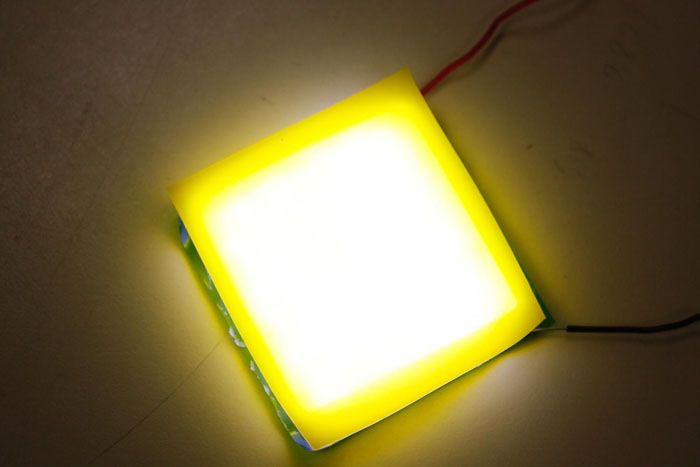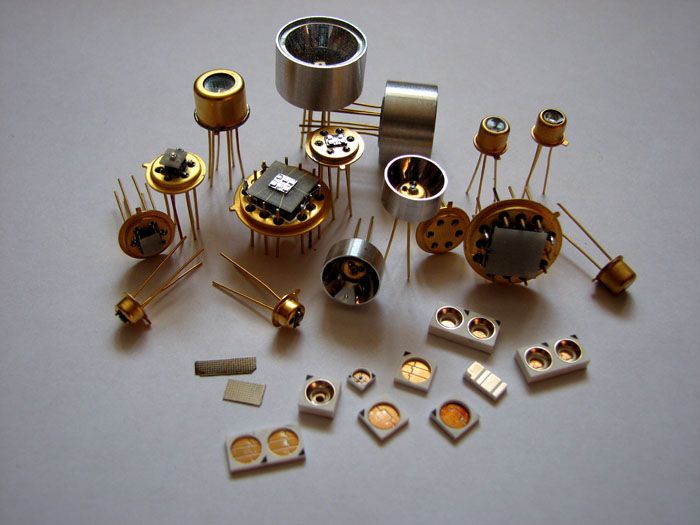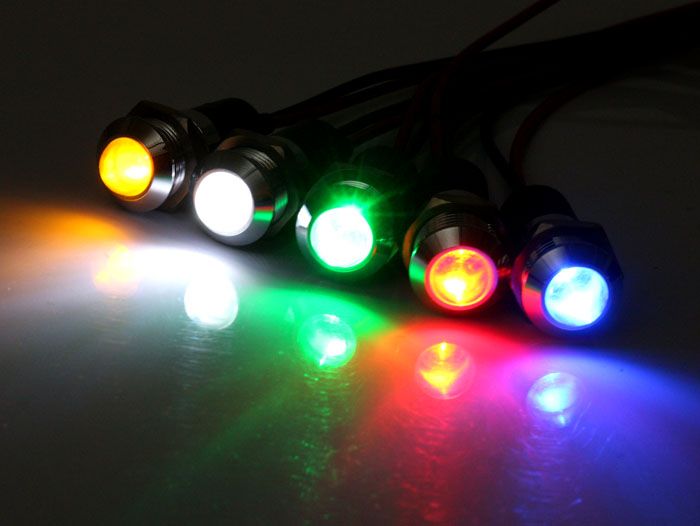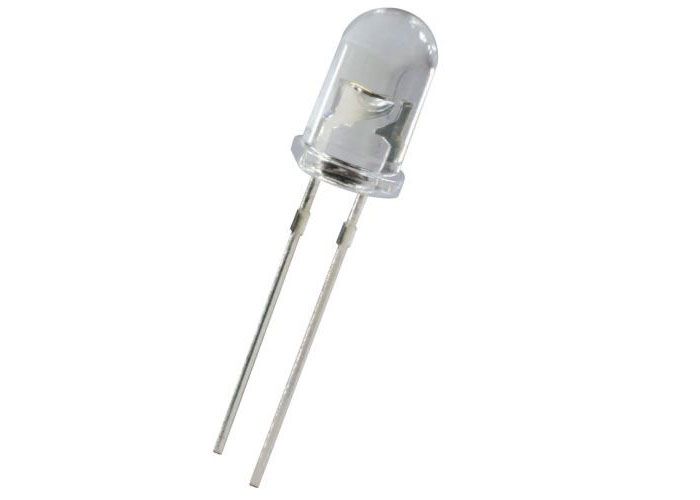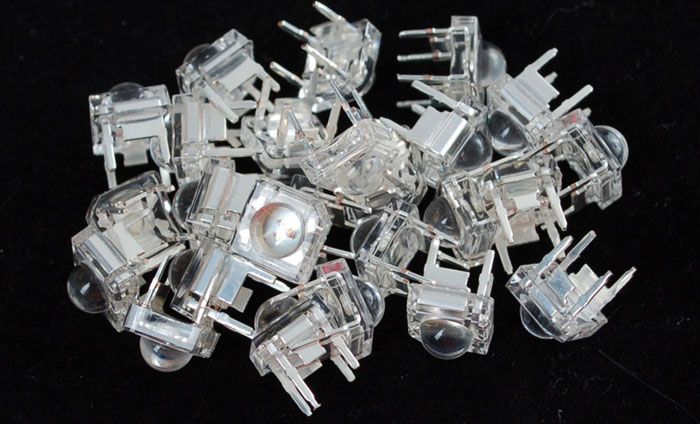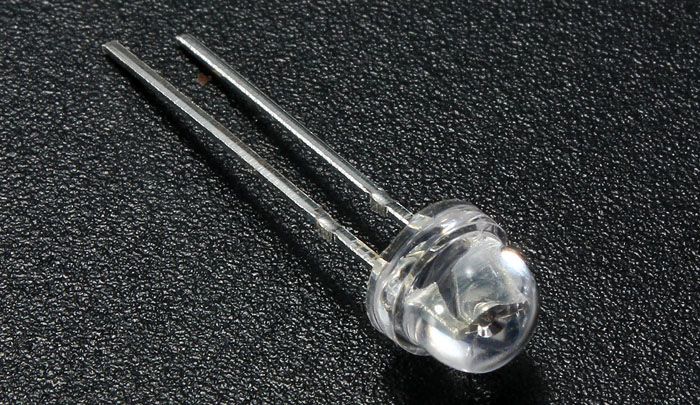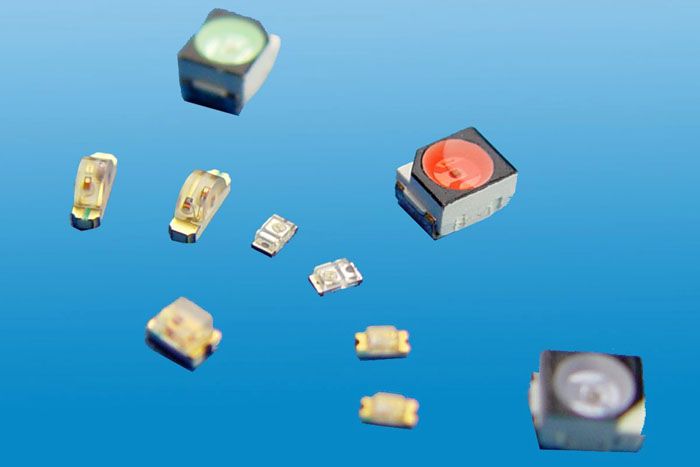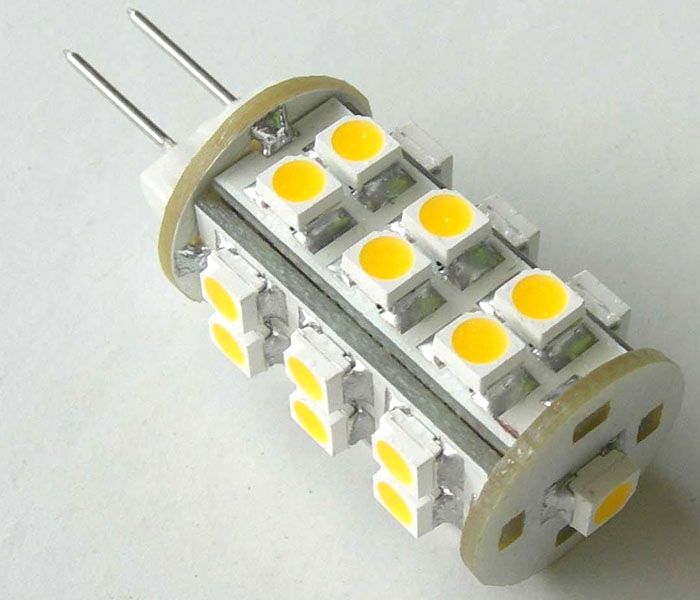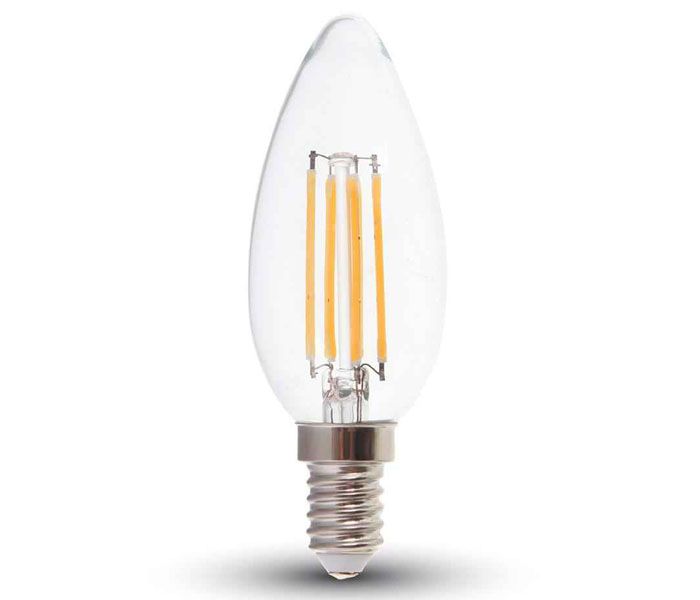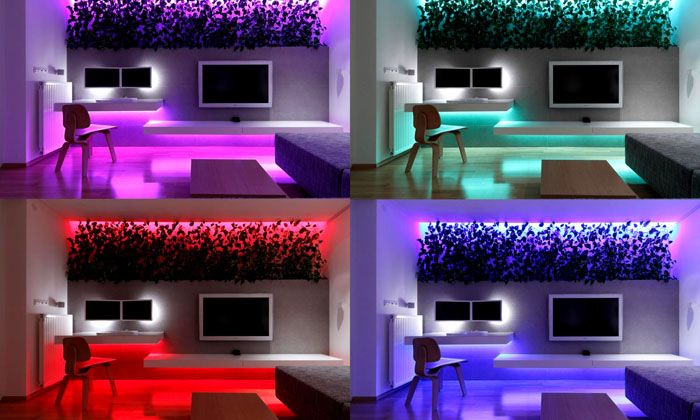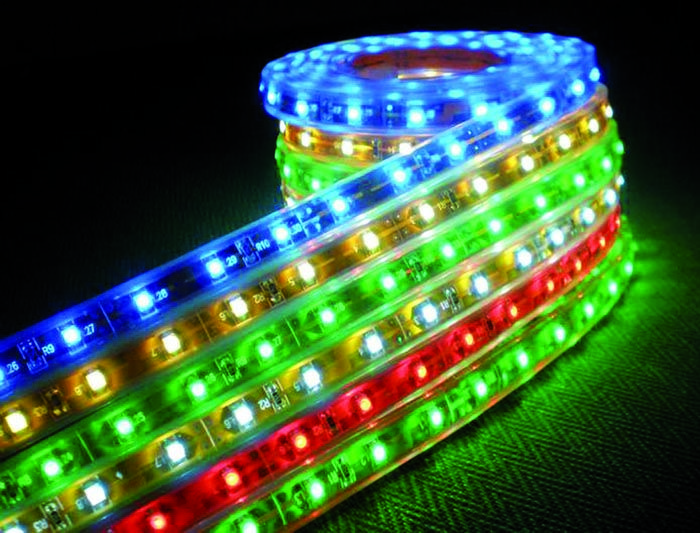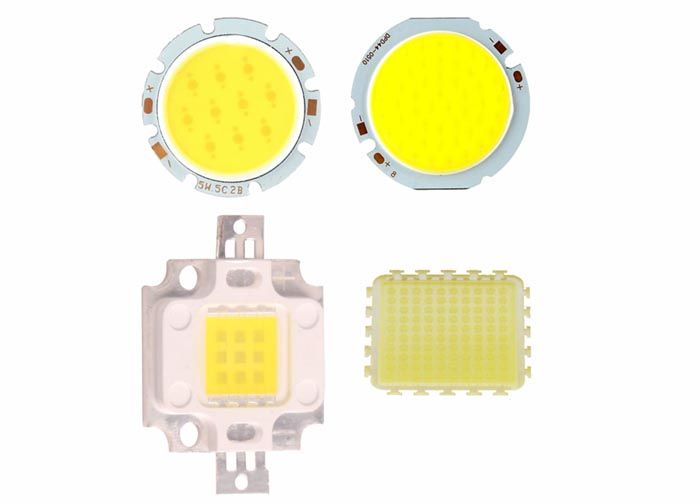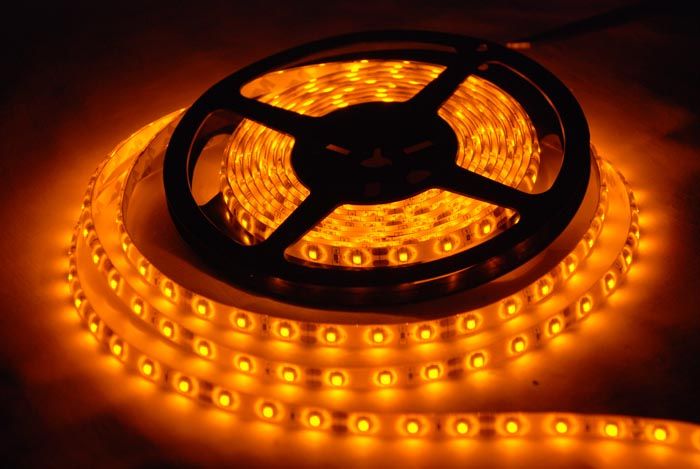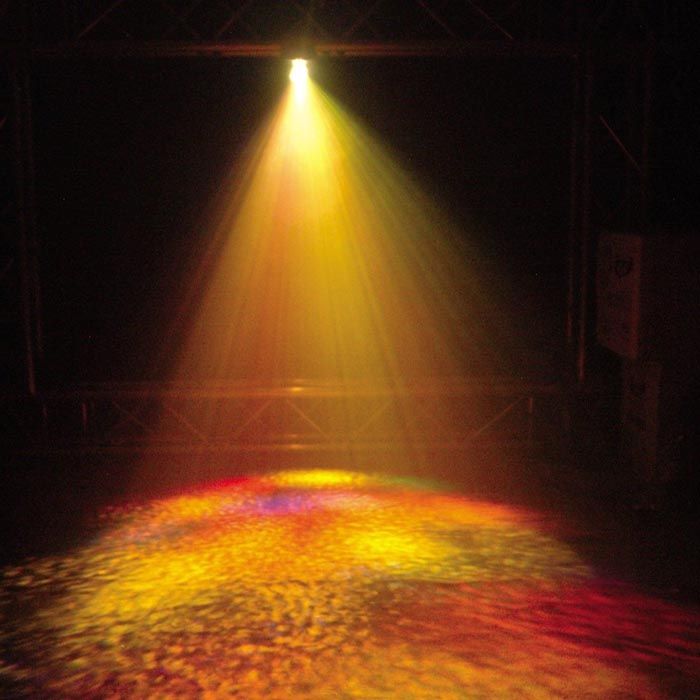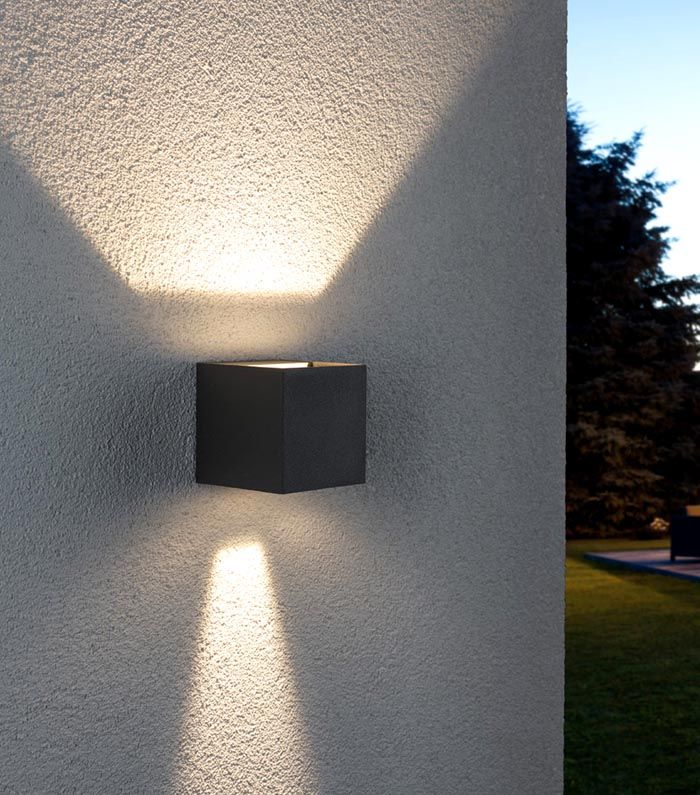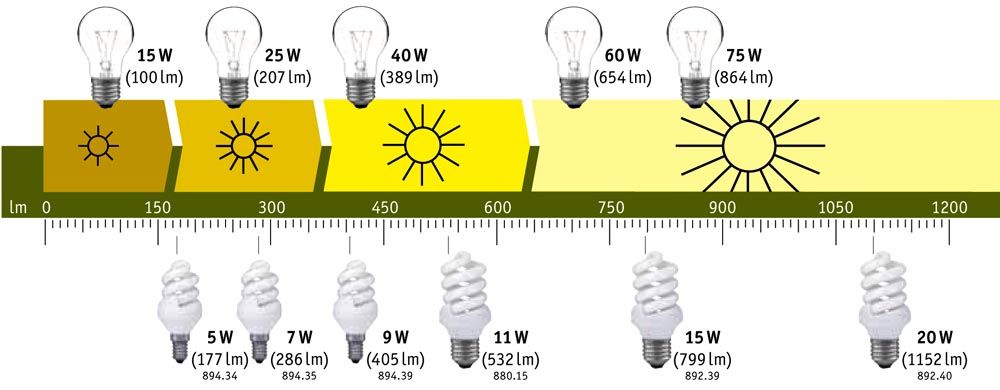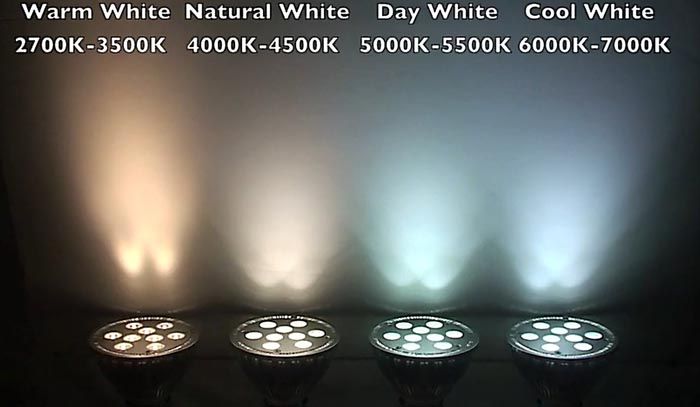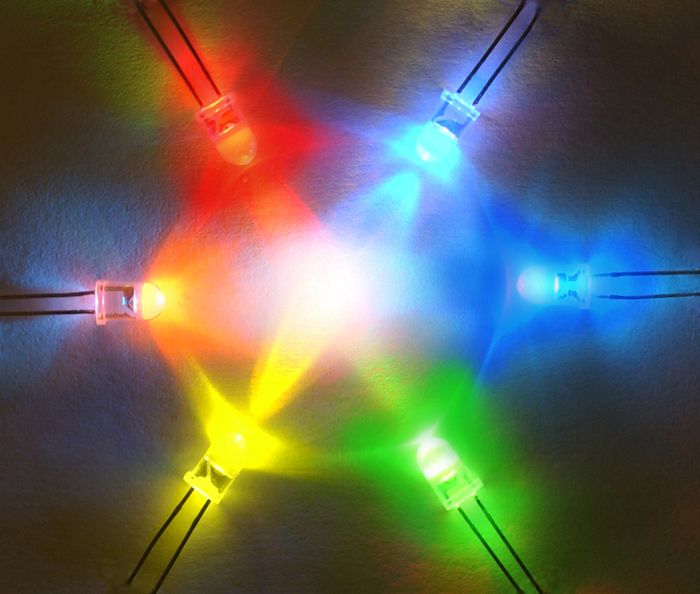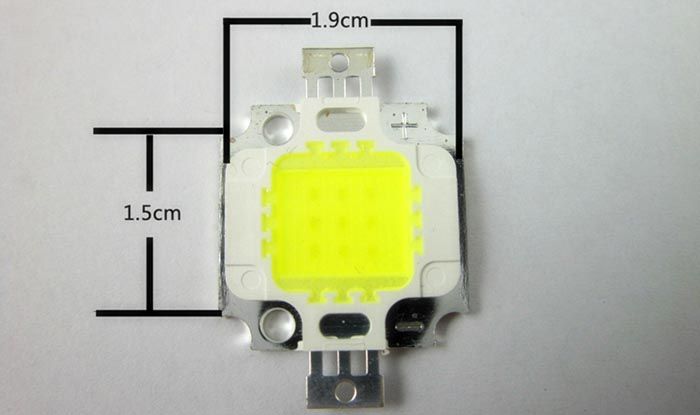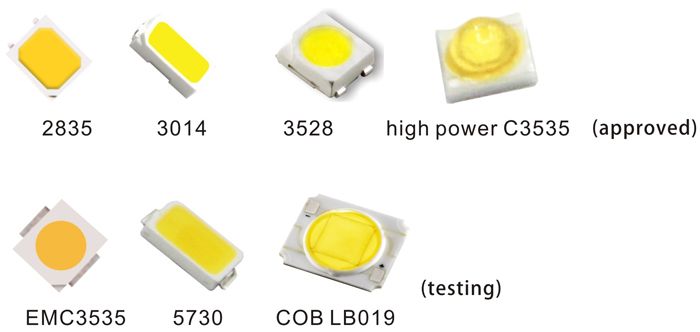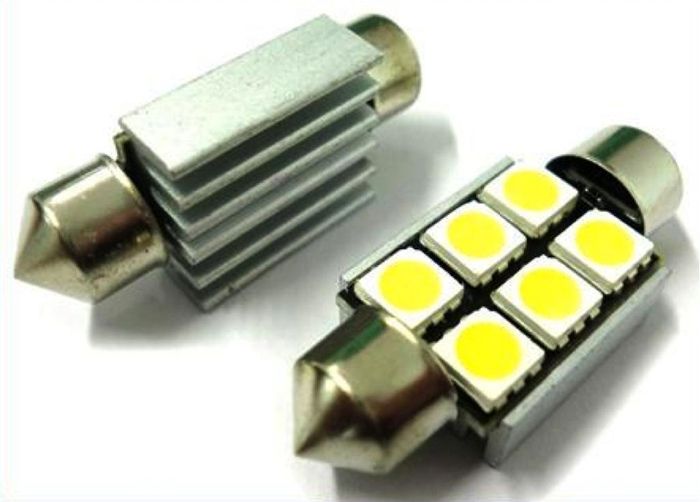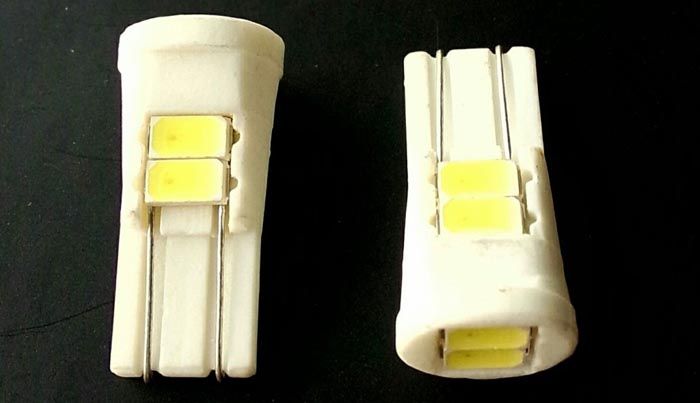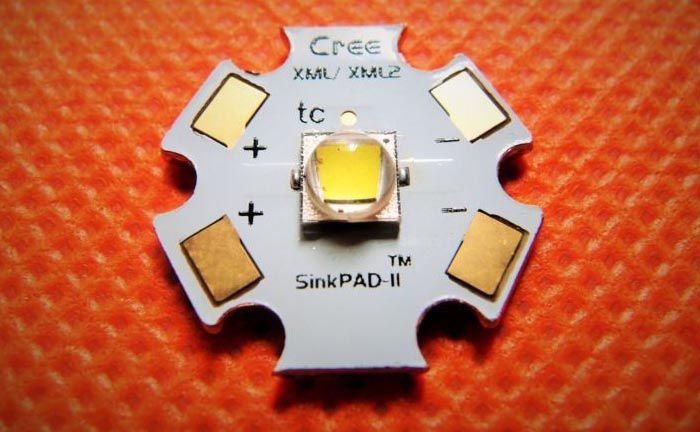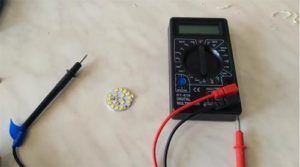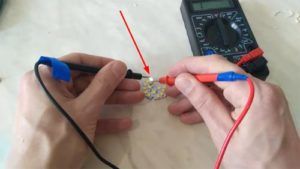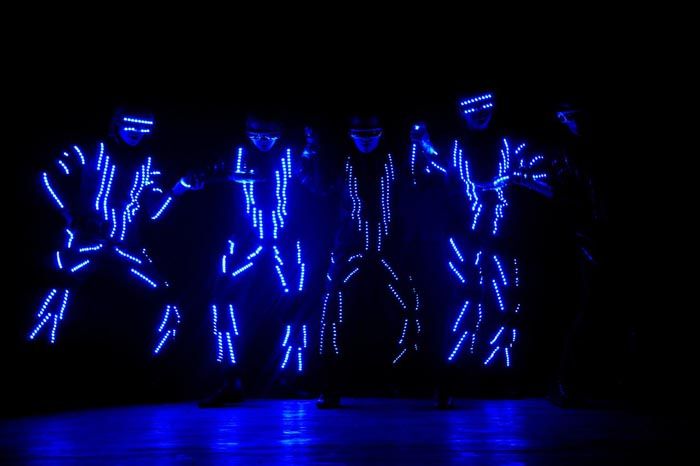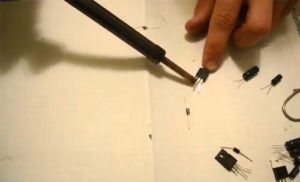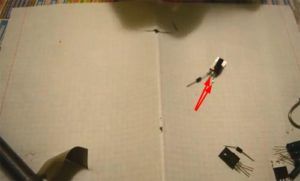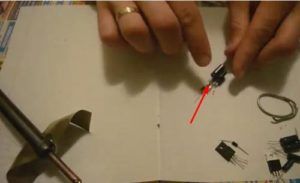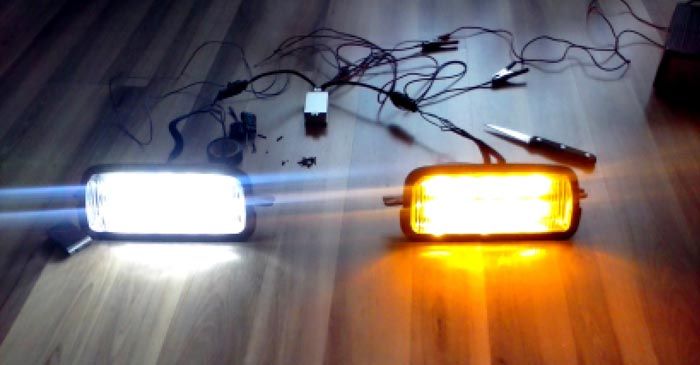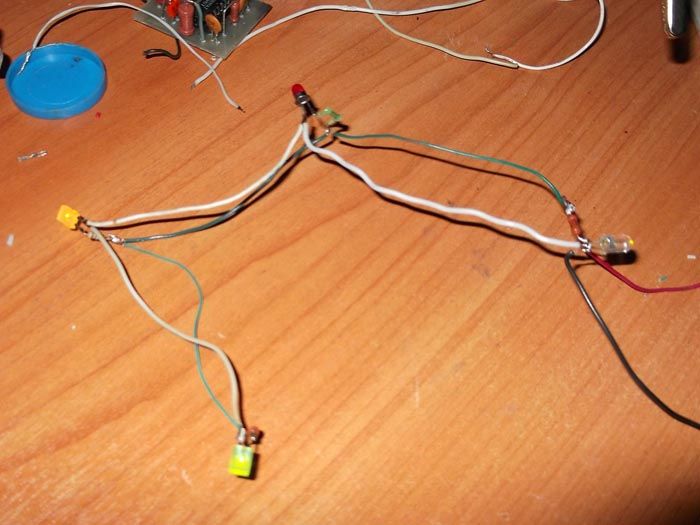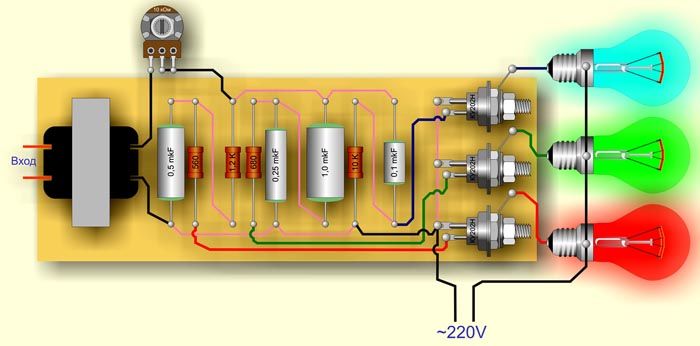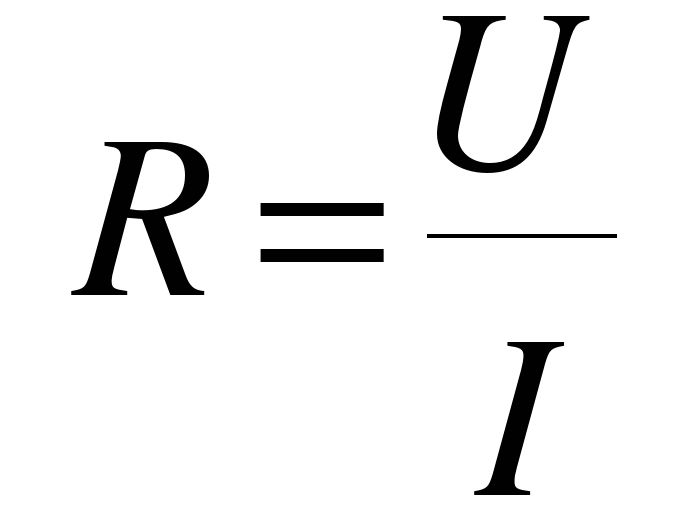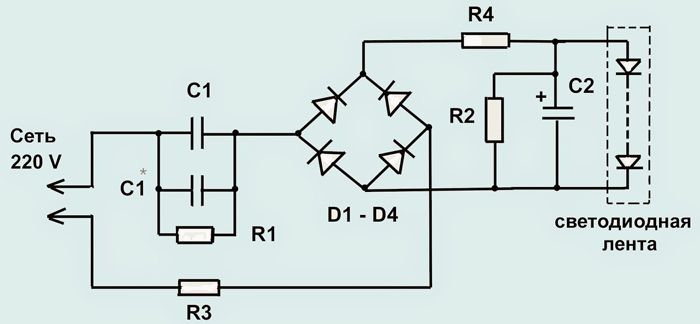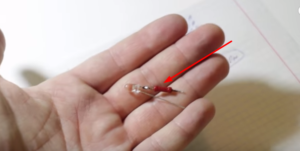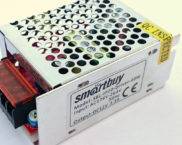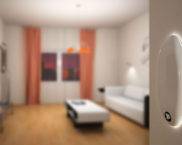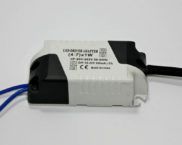Characteristics of LEDs: basic parameters and distinctive features
LED lighting can be safely called the most efficient. With minimal power consumption, such products are capable of generating a sufficiently large luminous flux. Knowing the main characteristics of LEDs, you can choose the best option in terms of room illumination and operating costs. We offer to familiarize you with the main types of diodes, their distinctive features and installation procedure.
The content of the article
- 1 What is LED: principle, device
- 2 Types of LEDs by purpose
- 3 Main characteristics of LEDs
- 3.1 Crystal current
- 3.2 LED voltage
- 3.3 Diode resistance
- 3.4 Light output, angle of illumination: important parameters
- 3.5 LED power: compare to incandescent lamp
- 3.6 Color temperature is a criterion that determines the comfort of perception of the luminous flux
- 3.7 Chip size: legend in marking
- 3.8 Crystal size is an important parameter
- 4 SMD-LEDs: standard sizes and main characteristics
- 5 Checking an LED with a multimeter
- 6 LED color marking
- 7 Decoding the LED strip marking code
- 8 What to make of LEDs with your own hands
- 9 LED connection diagrams
- 10 Video: basic parameters of LEDs
What is LED: principle, device
It is customary to call a LED a semiconductor device that, in the course of its operation, converts current into light radiation. It consists of a semiconductor crystal placed on a substrate, a package and an optical system. The characteristic glow appears when electrons and holes recombine in the pn-junction region. To create a p-n-junction, special alloying elements are introduced into the near-contact layers.On the one hand, they are acceptor, on the other, donor.
Types of LEDs by purpose
It is worth understanding in more detail what LEDs are. Such products are usually divided into two large groups: lighting and indicator. Each type has its own advantages and possible area of use. We suggest that you familiarize yourself with each group in more detail in order to better understand a wide range of LED products.
Indicator LEDs: special features
Display devices, due to their characteristics, are widely used for color indication. They are used to illuminate dashboards, displays, and a number of other products. With a relatively low power (less than 0.2 W), the indicator LEDs demonstrate moderate brightness.
They are usually divided into:
- DIP LEDs, consisting of a light-emitting crystal housed in a cylindrical or rectangular case. Allows to realize a wide range of color radiation. They come in one and many colors. Have a low angle of dispersion;
- Super Flux "Piranha". Super-bright four-lead devices in a rectangular package. Suitable for board mounting. They are produced with different glow temperature in housings with and without a lens. The scattering angle depends on the model and is 40⁰-120⁰. Relevant for transport and advertising signs;
- Straw Hat. Demonstrate a large scattering angle (100-140⁰) due to the proximity of the crystal to the front wall of the lens. Similar to conventional cylindrical models. They are distinguished by a large lens radius and lower height;
- SMD LEDs. Products with standard body sizes. Often used in the manufacture of LED strips.
Lighting LEDs: distinctive features
Lighting elements are included in LED lamps and tapes, headlights and other products for which it is important to provide a high glow intensity. They have great power. Available in surface-mountable housings. There are only white (cold or warm). Allocate:
- Lighting SMD LED. The most common type with a scattering angle of 100⁰-130⁰. During the manufacturing process, the emitting crystal is coated with a phosphor layer and mounted on an aluminum or copper substrate that provides sufficient heat dissipation;
- COB LEDsconsisting of a large number of crystals. Have a large scattering angle;
- Filament LED. It is often used as decorative lighting. They have lower efficiency than SMD.
Pros and cons of LED lighting
The main advantages of lighting LEDs include:
- energy saving, allowing you to reduce electricity costs;
- different color glow;
- availability of a choice of color temperature;
- different angle of light transmission, allowing you to choose the right option for any room;
- small ripple factor.
Among the shortcomings, it should be noted aging, relatively short service life and heating.
Main characteristics of LEDs
When choosing an LED lamp, you should pay attention to the parameters of the LEDs. This will determine the possibility of using the product in specific operating conditions and ensuring the required level of illumination in the room.Attention should be paid to power, voltage, operating current, light output, glow temperature, and a number of other parameters.
Crystal current
The bulk of LEDs is designed for a current consumption of 0.02 A. However, manufacturers offer products consisting of four crystals placed in one package. Thanks to this design, the products are rated for 0.08 A, which is the sum of the 0.02 A consumed by each crystal.
The amount of LED current affects the stability of the device. With a slight increase in this parameter, the radiation intensity decreases and the color temperature increases. This is evidenced by the characteristic blue tint and premature failure.
Attention! With a significant jump in the current strength, the LED burns out immediately.
To limit the magnitude of the current of the LED lamps and fixtures are completed with current stabilizers. If available, the current is converted to achieve the required value. To connect a separate LED, a current-limiting resistor is used, the resistance of which is calculated taking into account the characteristics of the connected product.
Advice! For the correct selection of the resistor, it is worth using an online calculator that helps to calculate the required resistance.
LED voltage
For LEDs, the supply voltage is irrelevant. An important characteristic is the magnitude of the voltage drop across the LED, which numerically corresponds to the value of the output voltage of the product after the rated current has passed through it. The characteristic is indicated on the package. Knowing this value, it is easy to calculate the voltage remaining on the crystal, which is taken into account in the calculations.
Manufacturers offer LEDs with different voltages, which can be recognized by the color of the glow. If the crystal is white, green or blue, the voltage is about 3 V. For red and yellow products, the desired parameter can be in the range of 1.8-2.4 V.
When connecting diodes in parallel, the characteristics of each product should be carefully monitored. Even a small voltage jump of 0.1 V will cause a significant increase in the current strength. As a result, such an LED will definitely burn out.
Diode resistance
Diodes are characterized by the presence of two types of resistance: differential and direct current. In the straight section of the I - V characteristic, the differential resistance is small and less than the resistance to direct current. On the opposite side, the differential resistance tends to infinity and exceeds the resistance to direct current.
Light output, angle of illumination: important parameters
Traditionally, when comparing the luminous flux from different sources, the characteristics of the generated radiation are taken into account. An LED with a diameter of 5 mm can become a light source of 1-5 lm (the characteristics of super-bright LEDs are higher), although a 100 W incandescent lamp will create a luminous flux of 1000 lm. It is incorrect to make a comparison in this way, since the light from an ordinary lamp will be scattered, and from a diode - directional. To compare the characteristics of the named light sources, one should pay attention to the scattering angle of the diodes.
For LEDs, the scattering angle can range from 20 to 120 degrees. Due to their design, LEDs generate brighter light in the center, reducing the illumination level towards the edges of the diffusion angle. Thanks to this, it is possible to provide the desired level of illumination of the room with a lower value of power consumption. To increase the illumination area, the luminaires are equipped with diffusing lenses.
LED power: compare to incandescent lamp
Having decided to replace outdated incandescent lamps with LED ones, not everyone clearly understands what power products are worth buying. Experts recommend using the correction factor K = 8. So, if a 100 W lamp was used to illuminate the room, you can achieve the same level of illumination by installing an LED analogue with a minimum power of 100 W / 8 = 12.5 W. To find out which incandescent lamp a particular LED corresponds to, you can use the following table:
| Power of LED lamps, W | |
|---|---|
| LED | Filament |
| 3 | 25 |
| 5 | 40 |
| 7,5-8 | 60 |
| 10 | 75 |
| 12-12,5 | 100 |
When choosing and comparing different light sources, one should pay attention to such characteristic as efficiency. Its numerical value is determined by dividing the luminous flux (Lm) by the power (W). So, for incandescent lamps, this indicator is on average in the range of 10-12 Lm / W, and for LED lamps it can reach 130-140 Lm / W.
Color temperature is a criterion that determines the comfort of perception of the luminous flux
The glow temperature belongs to the category of important characteristics. Its unit of measurement is degrees Kelvin (K). The division is made depending on the glow temperature.
Attention! The comfort of perception of a particular light source mainly depends on its color temperature.
The color temperature value is always present in the marking of LED lamps. It corresponds to a four-digit number, followed by the letter K. When choosing an LED lamp, you should focus on the future area of use. We suggest that you familiarize yourself with the possible area of use of the LED lamp, depending on its color temperature and glow color:
| Color temperature, K | Glow color | Recommended area of use |
|---|---|---|
| 2700-3500 | White Warm | Household and office premises. Products capable of replacing an incandescent lamp. |
| 3500-5300 | Neutral (daytime) | Workplaces in production facilities. |
| more than 5300 | Cold | As an outdoor light source and in the manufacture of hand lamps. |
| 1800 | Red | Decorative and phyto-lighting. |
| 7500 | Blue | Phyto-lighting, interior lighting. |
| 3300 | Yellow | Interior lighting. |
The color temperature of LEDs can be expressed in terms of the wave nature of light. Often, in marking LED products, color temperature is expressed through different wavelengths. It is designated by λ and is expressed in nanometers (nm).
Chip size: legend in marking
In the marking of the LED element, the size is encrypted in the form of a four-digit number indicated on the board. Among the most popular geometric parameters of the past are products 5050 and 3528. They have been replaced by brighter competitors 5630 and 5730.
In this symbol, the first two digits correspond to the length of the chip, and the following ones correspond to its width, expressed in millimeters. So, the 5730 will have a chip length of 57 mm and a width of 30 mm. The difference in aspect ratio is due to the different number of crystals that make up the LED. The 3528 diode has one, the 5050 - three. This characteristic of LEDs for flashlights determines their design features.
Crystal size is an important parameter
The size of the crystal has a direct effect on the amount of current that can pass through it. Square models are equipped with ordinary crystals of 1 or 2 W, having a standard size of 30mil or 45mil, respectively. The more powerful analogs include crystals of 10, 20, 30, 50 or 100W with geometrical parameters of 24 mil at 24mil, 24 mil at 44mil or 44 mil at 44mil. Low-power models can be formed from crystals of various sizes. They may include 2-3 elements connected not only in series, but also in parallel.
SMD-LEDs: standard sizes and main characteristics
Manufacturers offer SMD LEDs of various sizes. Based on the geometric parameters, it is customary to divide the products into different groups, depending on the color temperature, brightness and power. LED marking includes their geometric dimensions: length and width, expressed in millimeters. We offer you to get acquainted with the most popular standard sizes in order to better navigate the assortment offered by manufacturers.
Main parameters of LED SMD 2835
Studying the technical characteristics of SMD 2835, you should pay attention to the increased radiation area. The model, unlike SMD 3528 with a round working surface, is manufactured in a rectangular shape. Such a constructive solution, despite the lower height (0.8 mm) of the element, provides a higher light output. It generates a luminous flux corresponding to 50 lm.
Due to the fact that a heat-resistant polymer is used for the manufacture of the case, the product is able to withstand the effects of a sufficiently high temperature (up to 240 ° C). After 3000 hours of operation, the product demonstrates radiation degradation of no more than 5%. It has a low thermal resistance of the crystal-substrate junction (4 C / W). The maximum operating current is 0.18 A at a crystal temperature of 130 ° C.
The glow color can be different:
- Warm white with a temperature of 4000 K;
- Daytime white equivalent to 4800 K;
- Pure white in the range of 5000-5800 K
- Cold white, corresponding to 6500-7500 K.
The glow color has a direct impact on the luminous flux. This parameter of SMD LED 2835 will be the highest for products with a cold white glow and minimum for a warm white. Larger contact pads of the model contribute to more intense heat dissipation.
Attention! The characteristics of the 2835 LED make it possible to use it for any type of installation work.
SMD 5050: LED characteristics
SMD 5050 assumes the placement of three LEDs of the same type in one case measuring 50 by 50 mm. The technical characteristics of the used LED sources of red, blue and green colors are similar to the crystals installed in SMD 3528. Each of the three LEDs has an operating current of 0.02 A with a total value of 0.06 A. The indicated value is the limit. Exceeding the value may cause the device to malfunction.
The devices are designed for a direct voltage of 3-3.3 V with a light output (luminous flux) of 18-21 lm. Each crystal has a power of 0.7 W, and the total value is 0.21 W. The device is capable of generating a glow of various colors from monotonous white, green, blue, yellow to multicolor.
The design and characteristics of the 5050 LEDs allow for individual control of each color due to the close arrangement of the elements. The controllers included in the luminaires allow you to smoothly adjust the glow color by smoothly changing from one to another after a given period of time. Often, several control modes are provided with the ability brightness control.
Main characteristics of SMD 5730 LEDs
Modern products with geometrical parameters of 5.7 × 3 mm. Due to their stable performance, SMD 5730 LEDs belong to the category of super bright products. New materials are used for their manufacture, due to which they have increased power and highly efficient luminous flux. SMD 5730 can operate in high humidity conditions. They are not afraid of vibration and temperature fluctuations. They are distinguished by a long service life. They have a dispersion angle of 120 degrees. After 3000 hours of operation, the degree does not exceed 1%.
Manufacturers offer devices of two types: with a power of 0.5 and 1 W. The former are marked with SMD 5730-0.5, the latter are marked with SMD 5730-1. The device can operate on impulse current.For SMD 5730-0.5, the nominal current is 0.15 A, and when switching to a pulsed mode of operation, it can reach 0.18 A. It is able to form a luminous flux of up to 45 lm.
For SMD 5730-1, the rated current is 0.35A, the pulse current can reach 0.8A with a luminous efficiency of 110 lm. Due to the use of a heat-resistant polymer in the production process, the body of the device is not afraid of exposure to sufficiently high temperatures (up to 250 ° C).
Cree: actual characteristics
The products of the American manufacturer are presented in a wide range. The Xlamp series includes single-chip and multi-chip products. The former are characterized by the distribution of radiation along the edges of the device. Such an innovative solution made it possible to establish the production of lamps with a large glow angle with a minimum number of crystals.
The XQ-E High Intensity series is the latest development from the company. Products have a glow angle of 100-145 degrees. With relatively small geometric parameters of 1.6 by 1.6 mm, such LEDs have a power of 3 V with a luminous flux of 330 lm. The characteristics of Cree single-die LEDs allow for high-quality color rendering of the CRE 70-90.
Multichip LED-devices have the latest type of power supply 6-72 V. They are usually divided into three groups depending on the power. Products up to 4W have 6 crystals and are available in MX and ML packages. The XHP35 LED is rated at 13W. They have a dispersion angle of 120 degrees. They can be warm or cold white.
Checking an LED with a multimeter
Sometimes it becomes necessary to test the LED performance. This can be done with a multimeter. Testing is performed in the following sequence:
Attention! If the contacts are mixed up, no characteristic glow will be observed.
LED color marking
To purchase an LED of the desired color, we suggest that you familiarize yourself with the color symbol included in the marking. For CREE, it is located after the designation of the series of LEDs, and can be:
- WHTif the glow is white;
- HEWif high efficiency white;
- BWT for white second generation;
- BLUif the glow is blue light;
- GRN for green;
- ROY for royal (bright) blue;
- RED in red.
Other manufacturers often use a different convention. So KING BRIGHT allows you to choose a model with radiation not only of a certain color, but also of a shade. The designation present in the marking will correspond to:
- Red (I, SR);
- Orange (N, SE);
- Yellow (Y);
- Blue (PB);
- Green (G, SG);
- White (PW, MW).
Advice! Check the legend of the specific manufacturer to make the right choice.
Decoding the LED strip marking code
A dielectric with a thickness of 0.2 mm is used to manufacture the LED strip. Conductive tracks are applied to it, having contact pads for chips intended for mounting SMD components. The tape includes individual modules with a length of 2.5-10 cm and designed for a voltage of 12 or 24 volts. The module can include 3-22 LEDs and several resistors. The length of finished products is on average 5 meters with a width of 8-40 cm.
A label is applied to the reel or packaging, which contains all the relevant information about the LED strip. The decoding of the marking can be seen in the following figure:
Related article:
In this article we will talk about how wiring diagram of 220V LED strip to the network... You can install such a structure yourself. And we will help you with this.
What to make of LEDs with your own hands
LEDs are often used for the manufacture of non-standard products. Often, self-assembled models are many times superior to ready-made counterparts. We offer you to get acquainted with ideas that can be implemented with your own hands.
LED current stabilizer
The voltage stabilizer can be manufactured in the following sequence:
We make DRL from LEDs
Daytime running lights can be made in-house if you want to increase the visibility of the car in the daytime. For this, 5-7 LEDs of 1 or 3 W are used for each block and aluminum board. The elements are fixed to the base with heat-conducting glue.
Assembly of flashing LEDs
The flashing LED is assembled according to various schemes. Depending on the goals pursued, you can choose monochromatic elements or different colors. Most often, the principle of "Darlington pair" is implemented, which involves alternately charging and discharging two capacitors, with sequential transfer of energy from one diode to another.
Light and music on LEDs
Using LEDs, you can collect light and music, which will add festivity. The figure shows a detailed diagram that will allow you to achieve the desired result. The microphone included in the circuit is the source of an electrical signal that transforms sound. It is worth paying attention to the super-bright 3-volt LEDs.
LED voltage indicator
The voltage indicator can be assembled on its own, guided by the diagram shown in the figure. This will require a number of resistors, transistors, LEDs, and power supplies. If the assembly is done correctly, the green light will light up when the voltage is applied, and the red light if dropped.
LED connection diagrams
When starting to connect LEDs, you should follow certain rules. You should adhere to the scheme, since the current moves in one direction.
Calculation of LED resistance
To find out how to calculate the resistance for an LED, it is enough to recall Ohm's law, which describes the dependence of the desired parameter (R) on the value of the current (I) and voltage (U): R = U / I. If you need to connect a 3 V LED designed for a current of 0.02 A to a 5 V power supply, you will have to remove the extra 2 V by including a resistor with a sufficient resistance of 100 ohms in the circuit.
Sometimes, according to the results of the calculation, it may turn out that the resistance of the LED should be increased by a non-standard value, having acquired a resistor with the nearest higher resistance value than required. The luminous flux emitted by the device will slightly decrease, although this will not be noticeable visually.
Diagram of connecting the LED to a 220 V network
The power source used determines the procedure for choosing the scheme for connecting the LED to the 220V network. Possible use:
- Current limited drivers. The current strength is calculated in advance. In this case, you can refuse the resistor. The number of connected resistors depends on the characteristics driver;
- Special voltage regulator.
Parallel and serial connection
LEDs can be connected in series and in parallel. In the first case, the required voltage will be equal to the sum of the voltage drops for each element. When connected in parallel, the current values are added. When using devices with different parameters, the characteristics are calculated for each of the resistors separately.
Connecting LEDs to 12V
The LED is connected in the following sequence:
Thus, it is easy to understand the characteristics of LEDs 3 W and more, as well as to install them yourself.
Video: basic parameters of LEDs



